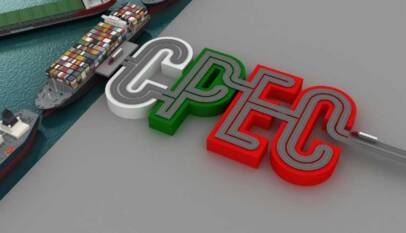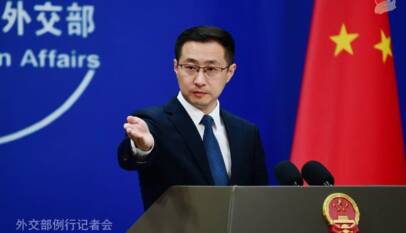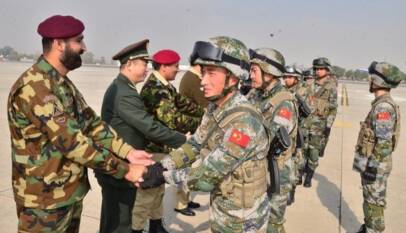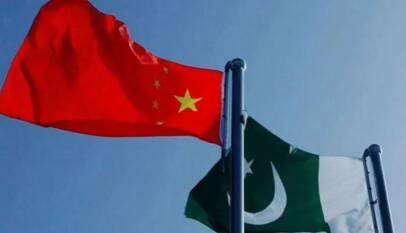Experts call for streamlined oversight to enhance investor confidence in CPEC SEZs
At a high-level policy dialogue in Islamabad, Chinese businesses urged Pakistan to improve security, streamline investment processes, and maintain supportive policies to foster industrial growth. Wang Huihui, Chairman of the China Chamber of Commerce in Pakistan, highlighted the importance of a secure environment for Chinese investors and recommended adopting China’s Green SEZ model to promote eco-friendly industrialization. While a recent survey by the chamber showed a business climate index of 49.63—just below optimism levels—70% of Chinese firms remained hopeful about Pakistan’s future. Key speakers, including Senator Mushahid Hussain Sayed, Chairman of the Pakistan-China Institute (PCI) and Executive Director Mustafa Haider Syed, called for a single, autonomous authority to oversee SEZs under CPEC, warning that bureaucratic turnover and fragmented management hinder progress. They also noted Pakistan’s potential to attract investment in renewable energy and electric vehicles as Chinese firms shift to market-driven decisions. Dr Erfa Iqbal from Pakistan’s Board of Investment stressed growth opportunities in CPEC Phase II and ongoing efforts to attract Chinese investment, despite IMF recommendations to gradually phase out SEZ incentives.
ISLAMABAD: Chinese businesses on Tuesday called on the Pakistani government to enhance security for investors, prioritize one-window operations and ensure the continuation of supportive policies to foster industrialization and business growth in the country.
Wang Huihui, Chairman of the China Chamber of Commerce and Industry in Pakistan (CCCPK), emphasized that Pakistan must create a secure investment environment to encourage Chinese private sector participation. He specifically pointed to the importance of learning from China’s Green SEZ model, which emphasizes eco-friendly development and sustainable practices, including the use of renewable energy.
According to Wang, these zones not only contribute to long-term industrial growth but also play a critical role in poverty alleviation and job creation. “SEZs have the potential to boost Pakistan’s industrial sector, reduce poverty and foster trade liberalization,” Wang said, noting that CPEC’s infrastructure development could be a game-changer for the country’s economy. He urged Pakistan to focus on modernizing industries, leveraging technology and boosting industrial competitiveness.
A recent survey by the CCCPK revealed a Business Climate Index of 49.63 for Chinese firms in Pakistan, just below the crucial 50-point threshold separating optimism from pessimism. It surveyed its major companies and found that 83.4 per cent of companies cited deteriorating security as a primary barrier to business, alongside concerns over foreign exchange controls and policy inconsistencies. Nevertheless, 70 per cent of respondents remained optimistic about future economic conditions.
The remarks came during a high-level policy dialogue hosted by the Sustainable Development Policy Institute (SDPI), titled “Driving Special Economic Zones (SEZs) Development Under CPEC 2.0: Opportunities for Sustainable Industrial Growth.” The event was held in Islamabad. Mushahid Hussain Sayed, Chairman of Pakistan-China Institute, underscored the need for Pakistan to take decisive steps to benefit from China’s global rise, particularly through CPEC and other infrastructure initiatives. “There are multiple institutions involved in managing these projects, but too ‘many cooks spoil the broth’. Pakistan needs a single, independent, and autonomous authority to oversee CPEC-related investments, especially SEZs,” he argued.
Mustafa Haider Syed, Executive Director of the Pakistan China Institute (PCI), also echoed calls for an autonomous body to oversee SEZ development in Pakistan. He argued that bureaucratic instability, with frequent changes in ministers and officials, hinders progress in the SEZ sector. “The key to success is creating a stable and empowered authority that does not depend on changing political leadership,” Syed said.
He also pointed out that with rising trade barriers in Europe and the US against China, Pakistan has a unique opportunity to become a hub for industries related to electric vehicles, solar panels, and renewable energy. He emphasized that China’s private sector is increasingly making market-based decisions on investments, shifting from government-to-government agreements. As Phase II of the Belt and Road Initiative progresses, he said, Pakistan must position itself as a competitive investment destination by improving its ease of doing business.
Hassan Daud Butt, Senior Advisor to Energy China, stressed the importance of localization for the success of SEZs. He pointed to the growing interest from Chinese companies in packaging and energy but warned that the government must implement a clear roadmap to address existing challenges. “China has a long-term vision for CPEC, but we must ensure real ease of doing business for investors,” Butt said.
Erfa Iqbal, Additional Secretary from the Board of Investment, emphasized that while Pakistan faces challenges, the SEZs are not in a dire situation, and there is room for growth in Phase II of CPEC. She also mentioned ongoing roadshows in Chinese cities aimed at attracting investment in Pakistan’s seven export-oriented sectors, which will continue until December 2024.
Addressing concerns from the International Monetary Fund over incentives for SEZs, she clarified that the IMF had recommended phasing out, not eliminating, these incentives.
Shakeel Ahmad Ramay, CEO of the Asian Institute of Eco-civilization, Research, and Development, criticised the inefficiencies arising from overlapping institutional roles, such as the Special Investment Facilitation Center and BoI. Ramay said that security for investors must be prioritized.
CPEC’s Success Story: $25 Billion Invested Across 38 Completed Projects
ISLAMABAD: A total of 38 projects worth over $25 billion have been completed and 23 develo…












